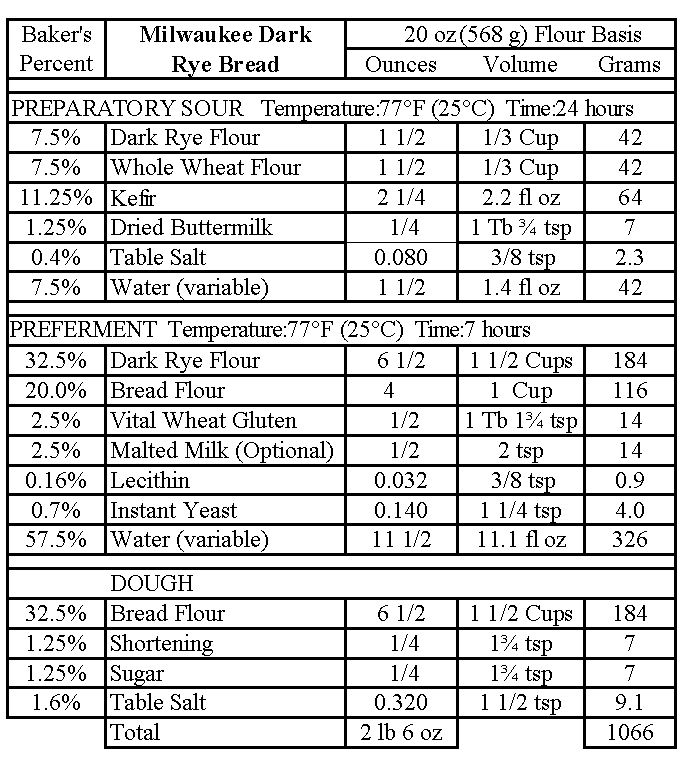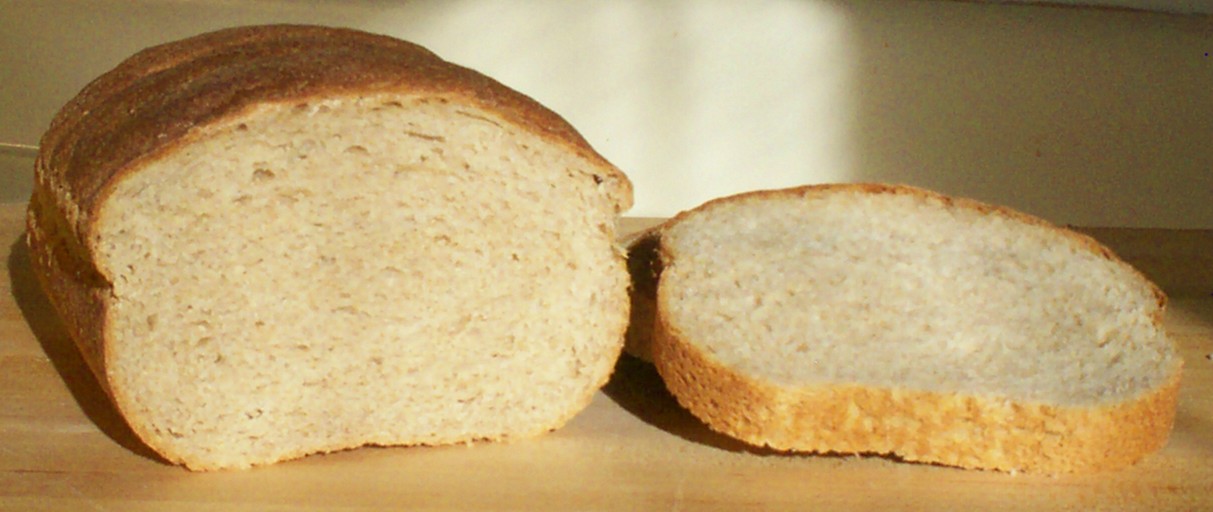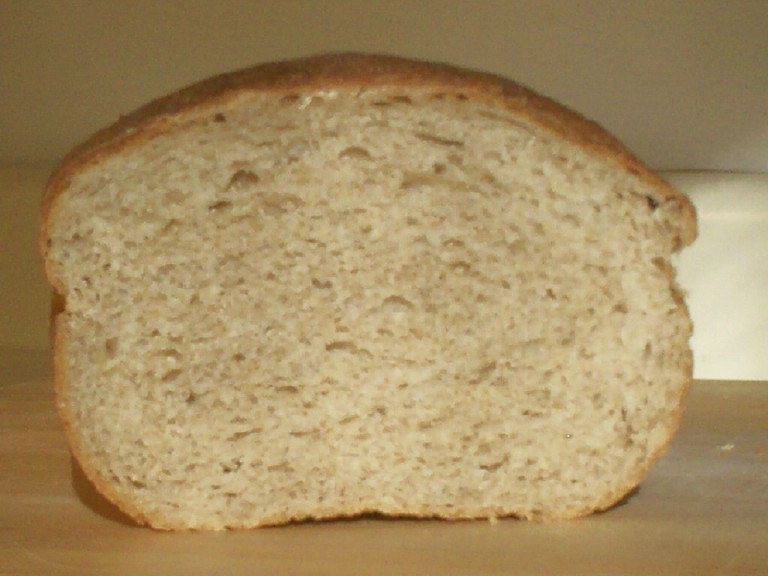Bob S.'s blog
Sweet Coffee Bread

Formula:
100% Bread Flour
6% Malted Milk Powder
6% Shortening
1.4% Vital Wheat Gluten
8% Canned Pumpkin
0.2% Lecithin
1% Instant Yeast
60% Water
Remix
8% Sugar
1.75% Salt
0.25% Cinnamon

This batch used 18 ounces of flour (510g), and was baked in an oversize loaf pan (5” x 10” x 3”).
Sweet Pan Rye with Whole Wheat

This loaf was made using the sponge and dough method. A KitchenAid K5SS stand mixer equipped with a spiral dough hook was employed. The sponge was set in the mixer bowl and covered with plastic wrap, then fermented for eight hours. The dough was re-mixed for a little over two minutes because of the high rye content.
Formula:
Sponge
33.3% Dark Rye Flour
37.5% Stone Ground White Whole Wheat Flour
2% Vital Wheat Gluten
0.5% Salt
0.5% Instant Yeast
68% Water (Variable)
Dough
29.2% Bread Flour
5.6% Honey
2% Shortening
1.5% Salt
Brown Bread

Another loaf made using the "Sponge and Dough" method, only this time the sponge contained whole wheat flour and vital wheat gluten.
Formula:
Sponge:
70% Stone Ground Red Whole Wheat Flour
5% Malted Milk Powder
2% Vital Wheat Gluten
0.5% Salt
0.6% Instant Yeast
0.18% Soy Lecithin Granules
73% Water (variable)
Dough
30% Bread Flour
4% Brown Sugar
3% Shortening
1.5% Salt
100% Red Stone Ground Whole Wheat Pan Bread

The absorption necessary to produce this soft loaf was relatively high, at 82%. This is the second loaf that I have made with Bob's Red Mill stone ground whole wheat flour. I used 78% absorption on the first run, which caused excessive loading on the mixer. Water was added to bring the absorption up to 80½%, which still resulted in a somewhat dry crumb.
This loaf was (of course) made with the re-mixed straight dough method. Here are a few more observations on dough mixing and re-mixing:
100% Stone Ground Whole Wheat Sandwich Bread

This loaf was made with Gold Medal white whole wheat flour. It was baked in an oversize loaf pan (10"x 5") with the final baked weight at 2 pounds. The dough was quite slack (78% absorption). In the past, I have had less oven spring with stone ground flour (being fairly coarse in nature), but lately the volume has improved. Re-mix time has been reduced to 3minutes 45 seconds, with good results. And the flavor of the stone ground flour is superior to fine ground (in my opinion).
Bob

Cinnamon Raisin Bread (1st Attempt)

This formula was adapted from Baker's Best, Formulas From Fleishmann's: Traditional Breads (not dated). Unlike other raisin bread formulas that I have seen, this one contains no salt. Perhaps the large percentage of cinnamon compensates the taste buds for the lack of salt. Here is the formula:
20% Spelt Bread

This loaf is formulated like white bread, only 20% of the bread flour has been replaced by whole grain spelt flour. Additionally, 2.5% vital wheat gluten was included in the formula, which raised the hydration by 3%. This dough was mixed in a KA K5SS 5 quart stand mixer equipped with a replacement spiral hook for a 6 quart mixer.

Here is a view of the dough immediately after mixing all of the ingredients together (except salt and honey).
33% Dark Rye with Preparatory Sour

This dough was mixed in a KA K5SS stand mixer equipped with a replacement spiral hook for a KA 6 quart mixer. The preparatory sour was mixed by hand. This batch used 15 ounces (425g) of flour, yielding a 24 ounce (680g) boule.
Formula:
Preparatory Sour:
6 2/3% Dark Rye Flour
13 1/3% Water
0.12% Instant Yeast
Time:24 hours Temperature: 76°F (24°C)
Dough:
66 2/3% Bread Flour




